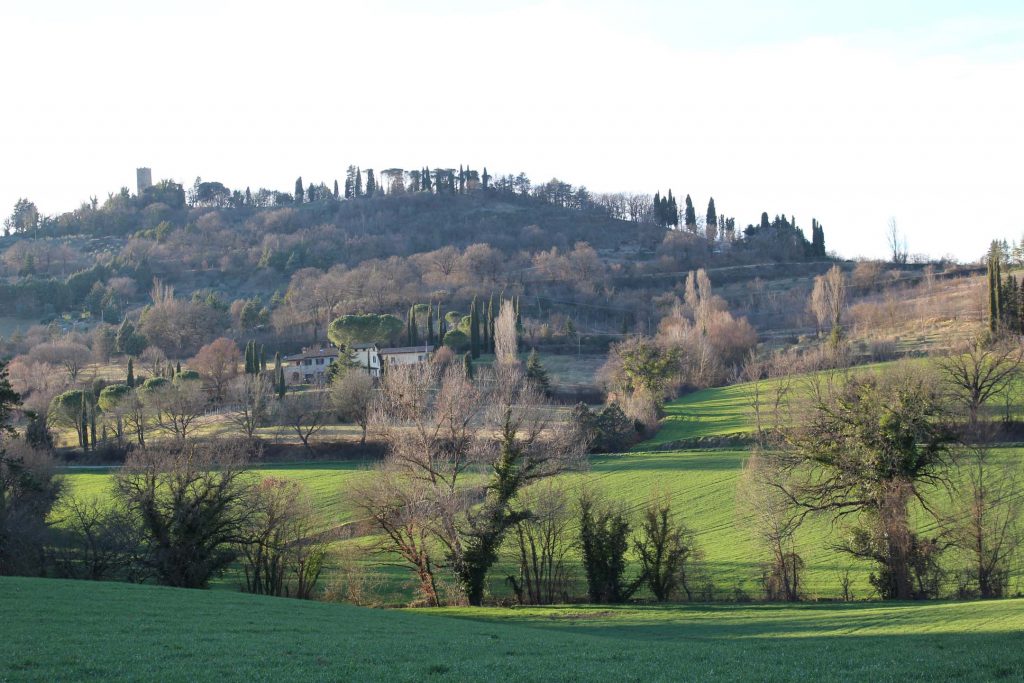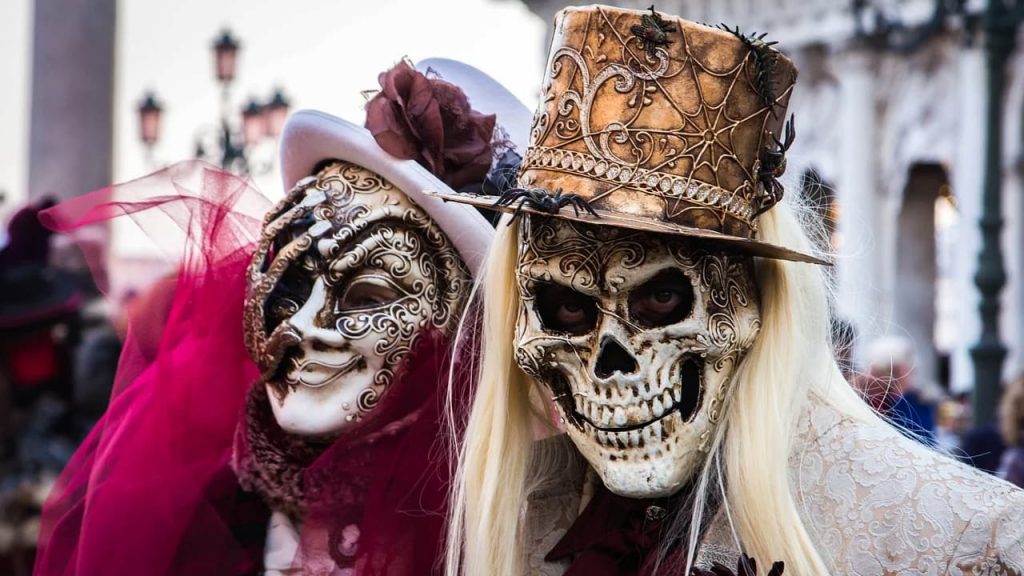The month of February is the turning point of winter. The days are noticeably longer. The very early buds and tiny ground flowers are visible. The big fields of winter wheat are fluorescent green. But it is still cold.

February is when the farmers in these Umbrian valleys and in the nearby Tuscan valleys start the seedlings for their most important cash crop – tobacco. [previous post about Tobacco growing] It is labor intensive. The soil is completely removed and the beds are refilled with straw and manure and fertilizer and then rich alluvial earth is added from near the rivers. The seeds are planted according to the phase of the moon. It must be full and beginning to wane. They do things by the old ways here.
~~~~~~~~
At this time of year, beans are a very big part of the daily diet. The one recipe I chose from the book – “The Tuscan Year” – for February is for Minestra di Fagioli.
Ingredients: one onion, one rib of celery, two cloves of garlic, small bunch of parsley, 2 oz pancetta, 3 Tablespoons of olive oil, small can of tomatoes chopped, 5 1/2 ounces cooked white beans, 3 1/2 ounces short pasta, salt, and stock.
Instructions: chop onions, celery, garlic, parsley and pancetta. Heat olive oil in large pan and add to pan and cook until soft. Add tomatoes, stir and allow to cook for 10 minutes. Meanwhile coarsely purée beans and then add to soup. Simmer 10 minutes. Add stock to thin. Cook 15 minutes. Add pasta 15 minutes before serving, cook and add more stock as needed for your preferred soup consistency. Serve with pecorino or parmesan cheese and a spoon of good olive oil.
~~~~~~~~
February is normally the month when Lent begins (This year, Lent begins March 2 because Easter is late). Most Italians still take Lent seriously. But first! There is Carnivale! This is literally ”farewell to flesh”. In Germany it is called Fasching. We would be familiar with Mardi Gras because of New Orleans. Here in Italy, in the large cities, they have huge parades and feasts. But in the little mountain valley of our friend Silvana (from the book ”The Tuscan Year”) it is a bit more low key but still a festive occasion, looked forward to by all.
First the traditional sweets must be prepared. This one is called Castagnole.

The pre-lenten dance is called veglione, a ballo in maschera — masked dance. It was held in a cleared out barn. The young women don their finest, fluff their hair and make themselves sultry with makeup. The young men slick their hair and wear their new trousers. The middle aged dance in their Sunday suits and flowery dresses. Silvana just watches. She lost her 16 year old son in a tragic accident. The big tractor tipped over and killed him. Silvana will be in mourning for many years.
Excerpt from the book…
”About halfway through the evening, the door is flung open and a group of masked, costumed figures rushes in. The band strikes up a new tune and the masked dancers form lines and perform a strange dance like a fast minuet. Their faces are covered with veiling pulled tight and they have all manner of odd hats and garments on. There are men wearing sunbonnets and cotton frocks and girls in patched trousers hung with tin cans, but the veils make them all anonymous and slightly sinister. The music changes, the formation breaks up, the masqueraders grab at the nearest onlookers and whirl them round in faster and faster circles as the tempo quickens. Suddenly, at an unheard signal, the music stops and the dancers disappear as quickly as they arrived. It is midnight and time to eat!”
The party goes until 4.
Carnevale, Fasching, Mardi Gras…whatever you call it…always has a sinister and slightly spooky feeling.

